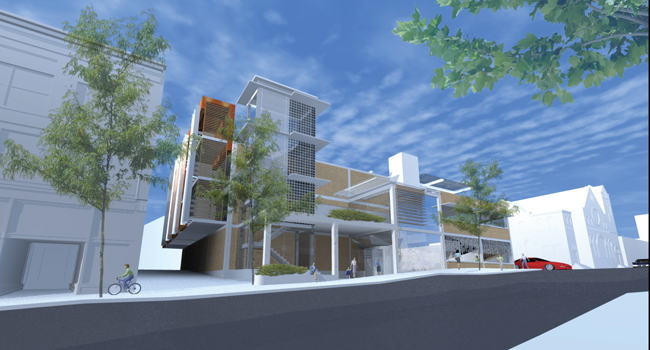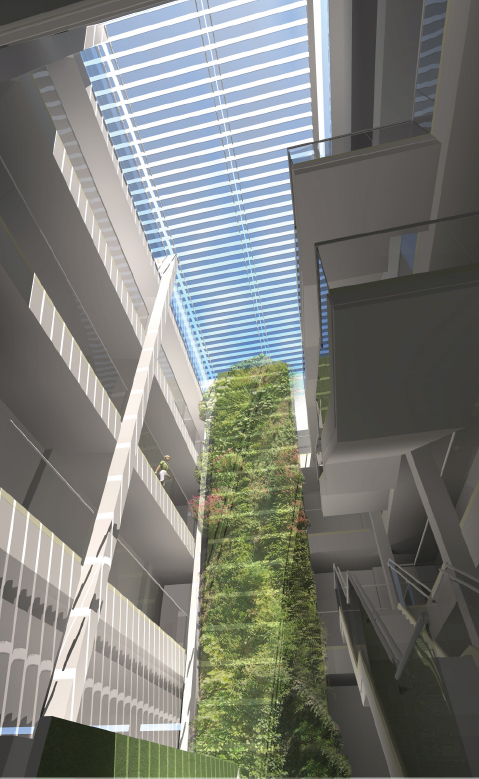Fall 2007 Arch. 451: Architecture Design V (UG) Carbon Neutral Studio
Adaptive Re-Use (Alternative Approach 1)

Design Performance Objective |
Adaptive Reuse
Adaptive Re-use of existing YWCA facility in Elgin, IL included user group inputs through student interviews. Student team constructed an outline of sustainable features, integrating systems to reduce energy use, maximize solar harvesting, improve daylighting and vegetation, and manage rainwater on-site.
These images document such an approach within the context of a very short period of time in a summer session graduate course. The students in this case were as enthusiastic about redeeming this urban eyesore building and converting it into a highly functional, low-impact facility as a model for future development in a rebounding downtown full of high-impact renovations and new construction.
|
Students: Matt Kidd, Heidi Hurst, Ben King
|
Software/Tools: |
none |
|
Fall 2007 Arch. 451: Architecture Design V (UG) Carbon Neutral Studio
Adaptive Re-Use (Alternative Approach 1)
Using existing building stock, transform a building from its original use to a new use as a means of limiting new construction to demolition redesign of existing infrastructure and finishes as needed.
|
Investigative Strategy |
If 50% of the existing building stock in the US will be renovated in the next 25 years (2030 Challenge statistics), there is a remarkable opportunity to affect the energy performance of this existing building stock adaptively. Using any existing structure, document it, and reconsider it against a program statement for another use with keen attention to reducing the load required, improving the building envelop performance, improving the experiential quality of space, and providing for renewable energy options. |
Evaluation Process |
The creation of an energy portfolio that compares predicted loads and predicted gains can be easily generated in a spreadsheet using generalized amounts for building type. Predicted gains can be drawn from generalized amounts, and compared against consumption estimates. |
Evaluative Criteria |
Here, I am mainly looking for innovative design strategies. Can the students get excited about reusing an existing building and make something happen with it that is exciting and creates value for a real client, demonstrating the potential of an existing building to breathe new life? |
Information about the Project and Studio |
• course outline
• project outline |
Cautions/Possible Confusions |
Students in general (and some faculty) don’t think that adaptively reusing existing building stock is “architecture.” It really is though; it can touch urban design, interior architecture and interior design. All four disciplines touch on sustainability issues, from demolition and waste issues to life cycle considerations and recycling.
|
Range of Applicability in terms of CLIMATE |
|
Range of Applicability in terms of TYPE |
|
Reference Material |
|
Duration of Exercise |
|
Degree of Difficulty / Previous Knowledge Required |
|
| |

|
|
Adaptive Re-use
Matt Kidd, Heidi Hurst, Ben King
The deep plan configuration of the existing building was surgically opened up and adapted for daylight, vegetation and fresh air |
|

